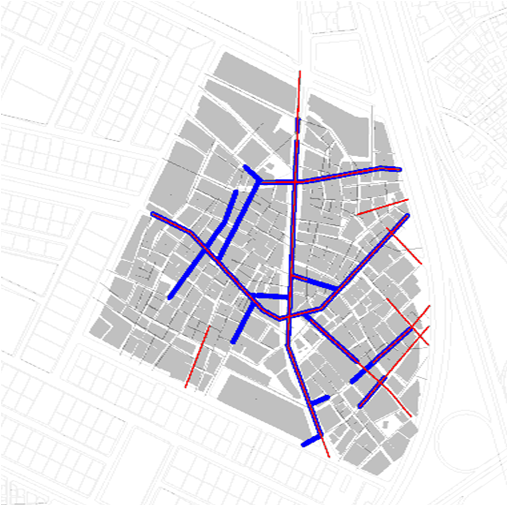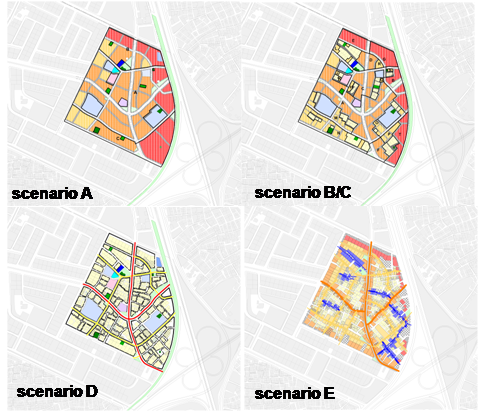How can space syntax be applied in urban planning and design?
1. Trafalgar Square
The network of public spaces in central London between Trafalgar Square and Parliament Square is the heart of national government and, for many, the heart of London. A masterplan for the area was commissioned in 1996 by Westminster City Council and the Greater London Authority, calling for improvements in the quality of the public realm, which – although of historic importance – was perceived to be unpleasant, unsafe, and dominated by traffic.
a. Diagnosis – problems, opportunities and constraints
Form – Spatial accessibility analysis (A)
Key spatial issues: Trafalgar Square is not spatially integrated into its surroundings.
Function – Observation study of pedestrian movement and stationary activities (B)
Key functional issues: Evidence revealed Londoners avoided the centre of Trafalgar Square and tourists failed to make the journey between Trafalgar Square and Parliament Square.
Interpretive models– space vs. movement and stationary activities
Define development opportunities and constraints and to provide the evidence for proposing design recommendations.
b. Prognosis – design development and forecast
Space Syntax Limited gave design recommendations including a major new staircase into Trafalgar Square, selective pedestrianisation of the public realm and the re-connection of Parliament Square to the wider area.
Given the historic importance of the context, these solutions required a very convincing technical argument. The interpretive model of space and movement was developed to allow us to quickly test design solutions(C) against the diagnosis study, and to assemble evidence for that argument.
c. The outcome
The evidence from Space Syntax proved compelling, and permission to move forward was granted by all bodies concerned.
Our diagnosis and prognosis underpinned Norman Foster’s competition entry and helped his team secure the commission.
Trafalgar Square is the first element of the masterplan to be completed in 2003 and has been a huge success, with levels of pedestrian movement in the square increasing by thirteen times.
The space is now animated throughout the day by tourists and Londoners alike (D), demonstrating that the UK can create great public spaces to rival those in the rest of Europe.



















